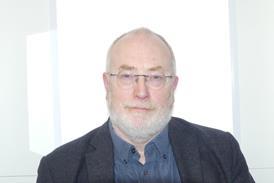Dean Royles was right to say that safe staffing and care involve more than crude workforce numbers – which is why the NICE guidance does not support a minimum staff ratio, says Gillian Leng
Dean Royles makes several points in his comment piece on safe staffing levels that strongly echo the recommendations in the National Institute for Health and Care Excellence’s draft guideline on safe staffing in adult acute inpatient wards. We are disappointed that the chief executive of NHS Employers feels the work is a “missed opportunity”.
He is absolutely right to say “safe staffing and good care involve more than crude nurse ratios”. We strongly agree with this. Our draft guideline does not support a minimum staff ratio. The idea of ratios, misreported by sections of the media, is too simple an answer to a very complex problem. Our draft guidance goes to great lengths to avoid setting ratios. Anyone taking a more than cursory glance behind the headlines will see this.
- Dean Royles: NICE nursing ratios hit the target but miss the point
- NICE staffing guidance warns of harm risk in nursing ratio
- Nursing workforce grows to highest level in a decade
Our safe staffing advisory committee did not just roll a die and find a magic number that could be applied across the wide range of wards on the NHS. Any instruction on setting staffing levels needs to account for the variety of patients that enter each NHS ward. The committee followed the rigorous NICE process and developed a sophisticated model of care that goes beyond a single nursing staff to patient ratio.
Guidance based on evidence
Mr Royles describes the view that “you can ‘smell’ poor care in an organisation and that you can tell when a ward is overstretched and the staff are not caring”. This may be true. But we must rely on evaluation of evidence to work out the causes and this is what we have set out in the draft guideline.

‘Our committee did not just roll a die and find a magic number that could be applied across the wide range of wards on the NHS’
We know there is strong evidence to support our draft guideline. It outlines the factors that need to be meticulously assessed when setting staffing levels. On the ward these include “red flag events”, such as patients not getting medication on time or their vital signs not being assessed, which call for an immediate response to adjust staff numbers.
Mr Royles rightly adds that safe healthcare is “complex” and involves the “contribution of other staff” but he criticises the draft guideline’s focus on nursing care. Considering the full multidisciplinary team is very important, nurse and healthcare assistant numbers are the main driver of safety on an inpatient ward.
The committee looked at the role of HCAs and recommended that senior managers ensure they can provide more skilled nurses. The evidence shows that a higher proportion of registered nurses contribute to better outcomes.
An important step forward
Mr Royles went on to express concerns that other areas would be given less priority until specific guidelines were published. We have not prioritised one area over another. The Department of Health and NHS England have referred nine hospital settings for NICE to develop guidance on. The full list can be viewed on our website.
An independent committee and specialist members, who will apply their expertise and experience to interpret the published evidence and economic analysis, will develop each guideline.
‘Although we know our guidance is eagerly anticipated, we need to balance this with ensuring we get it right’
There will be much from this first guideline that can be applied in other healthcare settings. Once the final acute inpatient guideline is published, it would make sense for all healthcare professionals to look at it and see how they can apply the recommendations as soon as possible.
Although we know our guidance is eagerly anticipated, we need to balance this with ensuring we get it right. We are now seeking feedback from hospital trusts, doctors, nurses and other healthcare professionals, as well as members of the public, to ensure the views of all relevant stakeholders are reflected in the final guideline.
This guideline is an important step forward in ensuring adequate staffing within the NHS. It is more complex than ratios.
More information
Professor Gillian Leng is deputy chief executive and director of health and social care at the National Institute for Health and Care Excellence



























2 Readers' comments